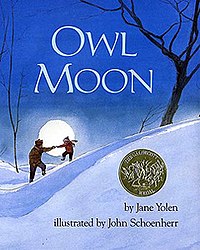
Can we relate a bit to this, fellow teachers? I know I struggle at times to read and understand what my students are trying to communicate through their writing.
I think our student writers can get a bit frustrated too. They have stories in their heads that they sometimes struggle to get down on paper in a clear way.
Here is where taking a week to teach how to write a personal narrative can be time well spent.
I like teaching this type of writing early in the year so that they are familiar with how to write a small moment story. My students are then inspired to write more and more of these.
I think this time of the year is also a great time because many children are experiencing great moments: trick or treating, fall festivals, Thanksgiving, etc.
Writing a personal narrative is a super starting point for all levels of writers. Everyone has a story they can tell about something that has happened to them.
I always start a new writing unit with a mentor text of some sort. I think reading a story like one of the stories inside the book, The Stories Julian Tells is a great way to begin the process. Reading some of these stories gives students a feel for what a personal narrative should sound like. After reading this one we spend some time just telling stories orally.

I then introduce the idea of a small moment seed story. I used the pumpkin and pumpkin seeds to illustrate this point because it is fall time but others have used the watermelon and watermelon seeds. All the same idea, and that key idea is this...
The best written personal narratives zoom into a short moment in time. They are told with such specific sensory details that the reader feels like he/she is living the moment themselves.
Other excellent mentor texts that are examples of the small moment story are:



LOVE ALL THESE BOOKS!
After reading these books and telling stories orally, we record some ideas for stories onto a small moment seed story paper. Each seed is an idea for a different story. We will grow these seeds into personal narratives throughout the year. You could even compile them into a class book titled: The Stories Third Graders Tell...A spin off from Ann Cameron's book.
After students picked one to start with, we used a prewriting graphic organizer to help us think through our story and record some good sensory details to include.
With that done, the rough draft is much easier to accomplish.
For me, it makes sense to teach my writing skills within the framework of a writer's workshop. The use of the quotation marks and similes are two skills that I teach through minilessons connected with this unit of writing. Then students work to apply those skills through the context of true writing.
I am offering my whole personal narrative unit bundle on TPT. I include all the student printables, minilesson note sheets to glue into the writers folders, rubric for grading and a three page outline on the procedures I use to teach this unit. For me it takes about a week or sometimes longer to take them through their first narrative. But then the expectation is that they can compose others all year long!
And we all know that our students writers will not improve their skill unless they have many opportunities to engage in real writing. Filling out worksheets does not count!
Interested in this one? Check here:
Do you have other ideas for the writing of the personal narrative?
Email me...I would love to hear!
Do you have questions about the process I use?
Email me...I would love to help!
Happy Writing!















































 youngdor8@gmail.com
youngdor8@gmail.com



















